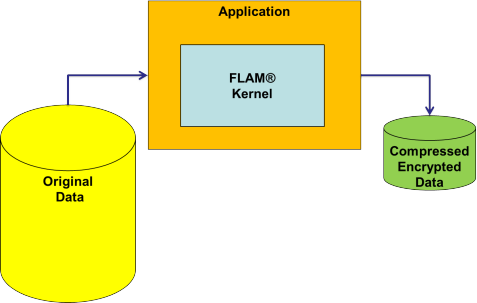The FLAM Kernel interface
The FLAM kernel interface is an API of FLAM version 5 that accepts arbitrarily many elements with their types, lengths, data, hashcodes, and additional attributes. From that it creates a compressed and encrypted segment or, respectively, it accepts such a segment and restores the individual elements as a doubly chained linear list. During this operation elements may be augmented, inserted, deleted, or modified. Access to an element can be done randomly. So if an application wants to organize the management of its elements by itself it may use this synchronous interface. By that, the FLAM kernel makes the limes datentechnik crypto and compression suites along with the access method available for other ISVs.
Benefits
- Easy integration of the algorithms and the expertise of limes datentechnik into any application
- Enhances security of the data by means of encryption and cryptographic protection of integrity (MAC calculation)
- Reduces volume of data by efficient compression algorithms
- Same platform-independent and universal access to arbitrary types of elements
- Application can freely choose how it stores and manages the compressed and encrypted data packets

The product
- Simple API for compressing and encrypting of arbitrary elements (type, length, data), their attributes, and retrieval information (hashcodes)
- All compression and cipher suites of FLAM available in the form of one synchronous element interface
- Protection of privacy, integrity, and completeness adjustable to different levels
- Random access to all elements through a double-chained linear list (insert, update, delete, seek)
- Uniformly available on many platforms and for various programming languages

